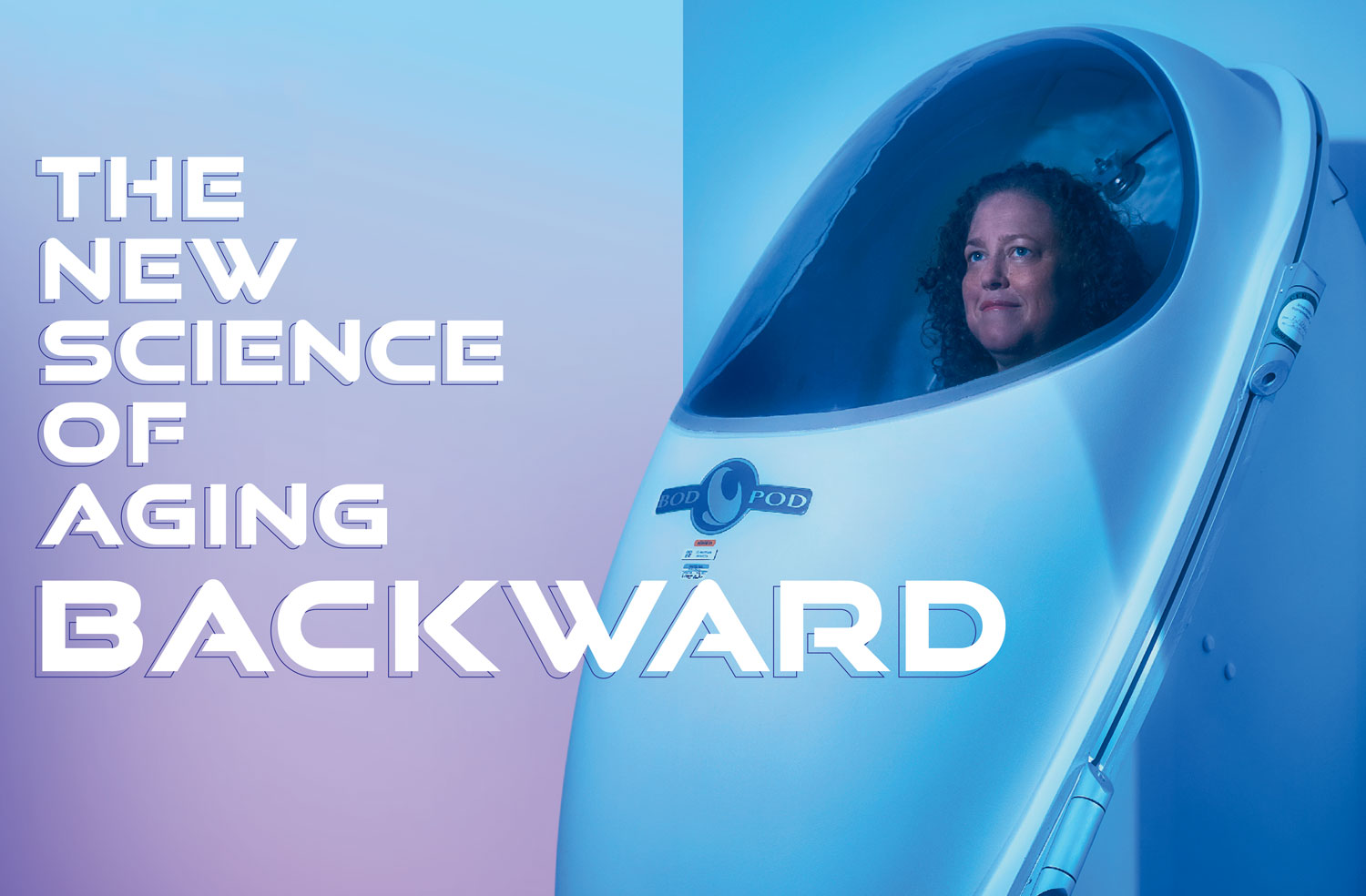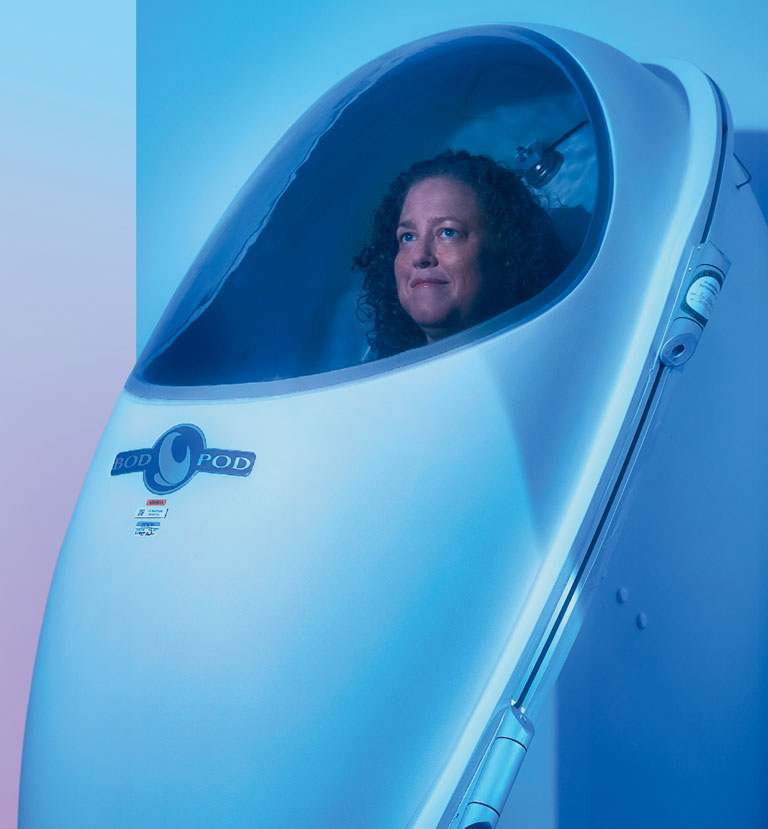We’re all going to die. On this front, there’s been little progress. But when? And how? And in what kind of physical condition will we spend our final years?
These are the thoughts running through my head as I ride the elevator to the 21st floor of the Lavin building on Northwestern Medicine’s Streeterville campus. I enter the elegant but sterile waiting room of the Potocsnak Longevity Institute, where I am to undergo a series of tests to measure my “biological age,” a favorite term of longevity experts. It’s a gauge of the wear and tear our lives have wreaked on our bodies at a molecular and cellular level.
After a few minutes, a research assistant comes out to lead me to an exam room in back. There, I’ll be subjected to a first round of tests, including an EKG, a retina scan, and a blood draw for the disconcertingly named GrimAge test.
On this particular day, my mind feels young, my spirit ancient, and my body somewhere in between. My driver’s license maintains that I am 46. But how meaningful is that, really?
John Wilkins, clinical director at the institute’s Human Longevity Laboratory, puts it like this: “When you ask how old someone is, you may be asking how long they’ve been alive, but you’re also implicitly asking how much time they probably have left.” Chronological age can’t tell you that, but biological age can.
And that’s where his lab comes in. Founded in 2022, the Potocsnak Longevity Institute began as a place where scientists across disciplines could study populations that seem resistant to aging — such as an Amish community in northeast Indiana — and attempt to determine what factors contribute to their longevity. But this past year, after a substantial gift from the institute’s main donor, Chicago industrialist John Potocsnak and his family, the institute launched the Human Longevity Lab, where research volunteers like myself can agree to be poked and prodded and folded into a database of test results in exchange for some unusually precise information about our health. It’s all part of an ambitious effort, aided by new science and new tools for analysis, to help us understand, better than ever, how we age and how we can live healthier for longer.
Inside the exam room, a research assistant, a woman in her mid-30s with dark, curly hair and nimble fingers, tightens an elastic band around my arm and draws blood faster than I can tie my own shoes. Another research assistant, an athletic recent college grad with a neat French braid, begins measuring my vitals and entering this information into the institute’s database, where it will be stored along with the results of the tests I am about to undergo.
“So today you’re going to do the body pod, the lung test, the retina scan, and the GrimAge test, right?”
“Right,” I say, not quite sure what each test involves and struggling to keep my anxiety in check.
Over the course of two rounds of testing, some, though not all, of what I’ll learn will be things I could get at any checkup: my cholesterol numbers, my blood glucose levels, my white and red blood cell counts. But thanks to AI analysis, this information can be used to correlate markers of aging to markers of disease.
The GrimAge test intrigues me most. Named after the Grim Reaper (really!), it is an example of what scientists call an epigenetic age test — that is, one that uses biomarkers to assess our biological age. The test itself involves a simple blood draw. My blood will be examined for methylation — chemical modification of DNA that occurs over time. The biological age that’s generated serves as an indicator of the likelihood of my developing a chronic disease like cancer or becoming cognitively impaired. In other words, I’m 46, but it’s possible I’m walking around with the DNA of an 85-year-old. In about a month, I’ll know.
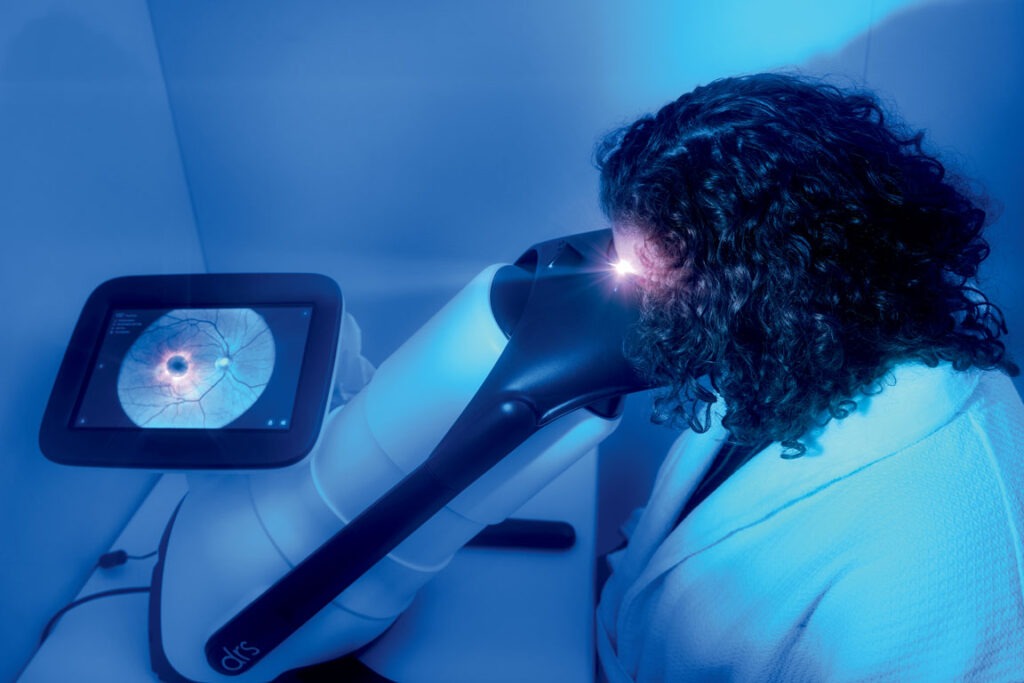
We move on to the Bod Pod, an oval-shaped metal capsule large enough for one. It looks like the kind of contraption you might use to escape a doomed planet in a sci-fi thriller, but in reality, it measures the precise amount and distribution of fat and muscle throughout your body — not as significant a test as the GrimAge, but another metric in a barrage of longevity data.
The research assistant with the French braid looks me over. “Hmm,” she says. “Would you mind putting on a swimsuit and swim cap? We have some you can borrow.”
I don’t know if I should be offended. “Does everyone put on a swimsuit for the test?” I ask.
“It’s helpful.”
They hand me a Speedo one-piece and a latex cap, then leave the room for me to change. Once I suit up, they (mercifully) offer me a spa-style robe, then lead me down the hallway to the pod.
“Hop in,” says the assistant with the braid.
I disrobe and, trying and failing not to feel ridiculous, sit down on a hard plastic bench inside the capsule. The lid is sealed, and I am fully encased, with a small window to look out of. I hear a pop, then a suction noise. The pressure builds up in my ears. Some kind of motor sounds, a clack-clack rattling. Through the window, I can see one of the assistants clicking away at her computer.
The test involves air being pumped into the pod over two 45-second intervals while sensors record how it moves around different parts of my body. When it’s over, the assistants crack open the lid. I step out and hurry back into my robe.
“Well,” I say, “am I fat?”
The assistant with the curly hair laughs, but doesn’t answer. It is time to move on to having my eyeballs scanned. After that will come huffing and puffing into a tube to graph my lung capacity.
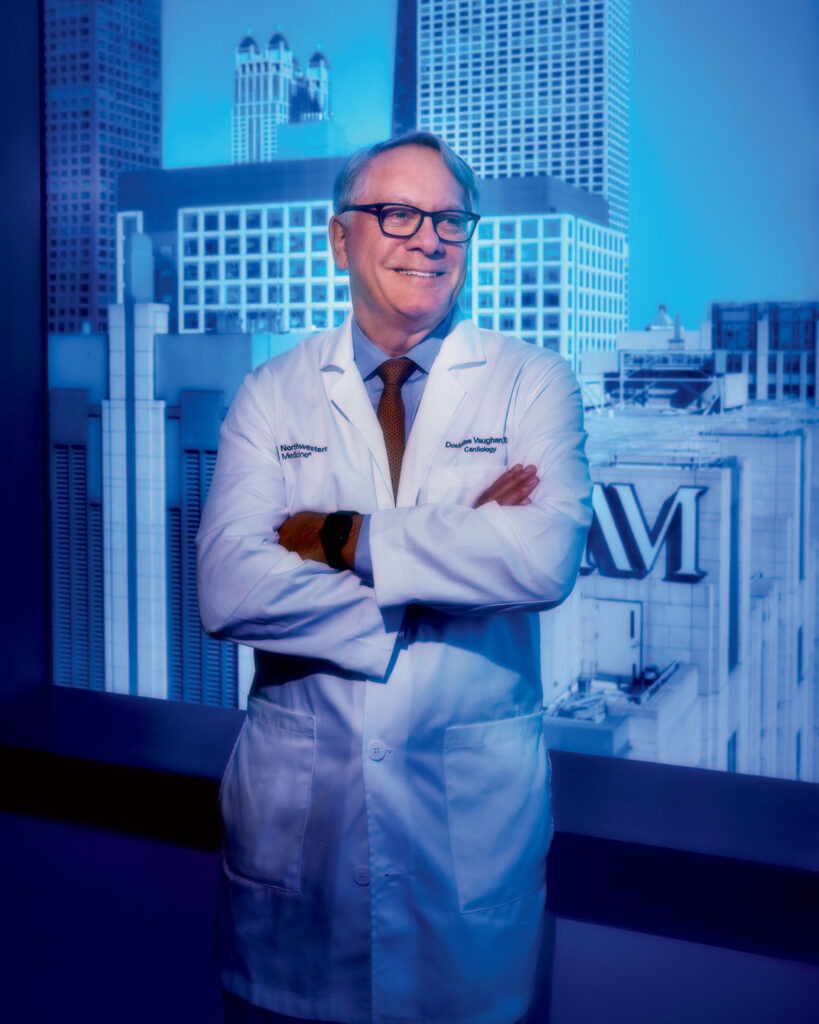
The results of my tests will be sent to partner laboratories around the world to be analyzed by cutting-edge AI programs that can assess biomedical metrics with a depth and precision impossible only a few years ago. These tests aren’t primarily screening me for diseases, but if any are found, I’ll be notified. In fact, the purpose of this testing isn’t even to provide me, or any of the research subjects, with information about our own health (though this is a welcome perk of participating). The intention is to compile the country’s most comprehensive database for longevity research — a source of thousands of human subjects’ age-related biomarkers that could be used to revolutionize the science of extending human life and vitality.
All of this is well and good, but at this exact moment, as I’m undergoing tests to determine my biological age, I’m thinking about the McDonald’s value meal I ate a few days before. And the cigarettes I burned through in college and the other things I smoked during my social-distancing depression. I’m thinking about all my clothes that “shrank in the dryer” over the years and are now folded in bins under my bed to be taken out and worn again at some unspecified future date. I try to remember when and why I stopped going to the gym, or doing yoga, or keeping track of my steps, or getting a solid eight hours of sleep. I’m not exactly dreading the results of my longevity workup, but let’s just say I’m not optimistic.
Not long after undergoing my first round of tests, I meet with the director of the Potocsnak Longevity Institute, Douglas Vaughan. A congenial man with a chronological age in the middle-late years (he declined to be specific — maybe he thinks chronological age is irrelevant?), he retains a youthful enthusiasm and curiosity that come across in the animated way he talks about the ideas and questions that drive his work. “I’m broadly interested in human health,” he tells me in explaining why he got into this field, as we sit in his office, with its panoramic view of the lake, at Northwestern Memorial Hospital.
A cardiologist who served as Northwestern’s chair of medicine until 2023, Vaughan started down this path by studying the heart and the cardiovascular system, which are particularly prone to age-related illnesses. In the early 1990s, he learned of a young woman with a very unusual genetic variant who was living in an Amish community in northeast Indiana. The woman had an atypical bleeding disorder caused by a mutation. “The gene that she had a mutation in, PAI1, turned out to be the gene I had been working on for my whole career,” says Vaughan.
From his own laboratory studies, he knew that this gene was involved in age-related pathology in mice, but he hadn’t been able to uncover exactly how the variant protects its carriers from the typical wearing down of the cardiovascular system — the kind of changes that lead to heart disease, for example. This Amish community offered new clues. It was known to have a number of so-called superagers — people who seem to be biologically protected from aging, thanks to the PAI1 mutation.
In 2015, he and his research team went to Indiana and examined some 200 community members, including nearly 50 carriers of this genetic variant who had only one copy of the mutated gene and who therefore didn’t have the bleeding disorder. “What we found out,” Vaughan says, “was that the carriers were in fact protected from aging in a variety of different ways. Their metabolisms were more efficient. Their fasting and insulin levels were lower. They didn’t get diabetes. Their cardiovascular system retained some of its more youthful characteristics. Their blood vessels were more flexible. They actually live about 10 years longer than their unaffected kindred.”
At this exact moment, as I’m undergoing tests to determine my biological age, I’m thinking about the McDonald’s value meal I ate a few days before. And the cigarettes I burned through in college. I’m thinking about all my clothes that “shrank in the dryer” over the years.
Vaughan pauses and leans back in his chair, waiting a moment to let the significance of this sink in. The thing he’d been trying to prove in a laboratory for years — that this particular gene was a critical factor in the rate of aging — was being demonstrated on a remote stretch of farmland in northeast Indiana. “Think of Mother Nature doing a natural experiment in a community that’s geographically and genetically separated from the rest of the world. These people don’t intermix too much. They live on their own. They live their own lifestyle. And they get randomized at birth. They either carry this genetic variant or they don’t.” It was the perfect place, in other words, for Vaughan to begin studying biological aging.
To explain this concept, Vaughan has me think about how much people in my life — even those in the same age range — vary in overall health and vitality. “Some people don’t show their age, right? Maybe you’ve got some people like that in your family, people who get to their 90s and they’re fully intact. They’re still with it, and they’re vigorous. Superagers don’t need us too much. Probably most of us fall on a more normal curve, where our biological age and our chronological age sort of match up.” Then there’s a less fortunate group of people that the institute is focused on helping: people who have accelerated aging.
Accelerated aging can result from a myriad of both biological and environmental factors: inherited genetic makeup, bad diet, poor exercise, exposure to pollution, chronic stress, the impact of a disease on the body over time, even your ZIP code. One recent study found that the amount of green space in your immediate surroundings can affect how fast you age.
When I first heard about the Human Longevity Lab, my mind went to billionaires looking to find a way to live to be 130, Silicon Valley megalomaniacs and health fanatics who do things like drink their teenagers’ blood. Their stories and schemes have garnered media attention and left me a little nauseous, so I am pleased to learn Vaughan has little interest in those types: “We couldn’t be more philosophically at variance with that sort of thing.”
As he sees it, the point of studying longevity and aging interventions is not to help already healthy individuals cheat death. “Our primary objective is expanding health span, not necessarily lifespan,” he clarifies. “For just about every disease you can think of, age is the most important risk factor, so if we can slow down aging just a little bit, we may be able to push back the onset of aging-related illness and give more people more healthy years.”
A recovering hypochondriac, I don’t need long to see the appeal of the institute’s research. I come from a family of physicians, and my parents instilled in me from an early age their own distrustful, at times antagonistic, relationships to their bodies. In my childhood home, sugar was contraband and regular medical checkups never slipped through the cracks. As an adult, I understand that my parents came to this attitude honestly.
When my father was 10, enjoying a conventional middle-class childhood in upstate New York, his father didn’t wake up one morning. He was 52 the night he died in his sleep, leaving behind three sons and a widow without any means of support. No autopsy was performed, but the family doctor believed he’d suffered a heart attack or some other catastrophic cardiovascular event.
This was in 1960. Today, he would have likely been on a statin to lower his cholesterol and medication to control his blood pressure. He may have exercised more, quit smoking, tried to eat less red meat. And yet, even for individuals with the healthiest lifestyles, who get regular checkups and follow their doctors’ advice, there’s still an element of mystery when it comes to the genetic hand one holds. Different people cope with that uncertainty in different ways. For some, ignorance is bliss. For neurotics like me, information can feel like control. When I was pregnant with the first of my children, I remember a friend asking if I minded all the poking and prodding you have to endure as you gestate to make sure things are going smoothly. I recall thinking that I actually found it reassuring, though I didn’t admit this to my friend.
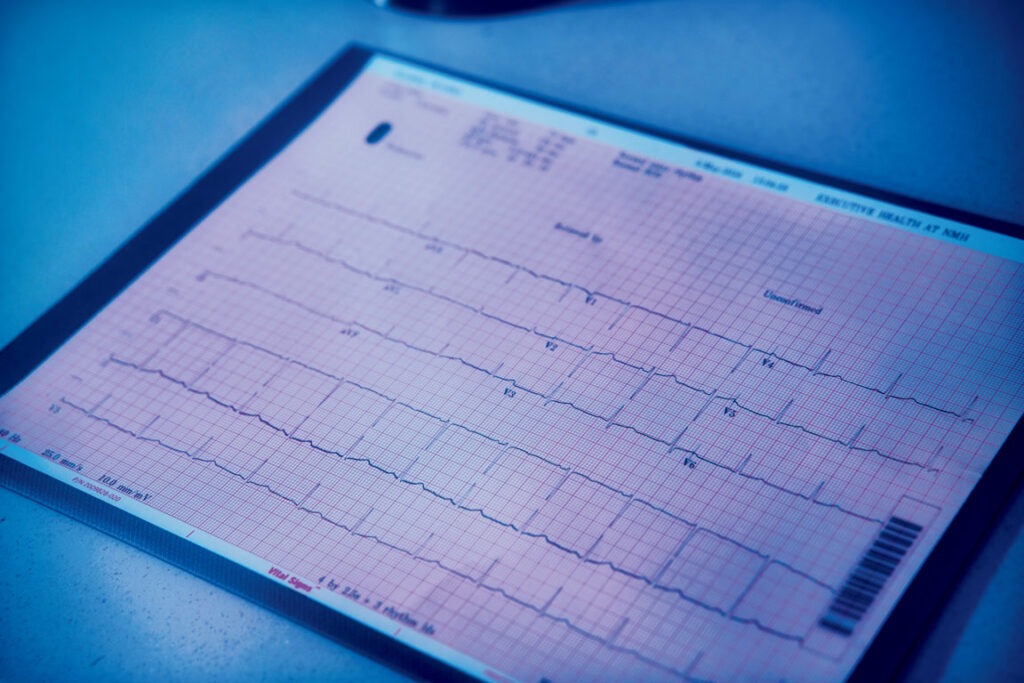
Of course, I have always understood that no amount of screening and vigilance offers certainty about our own aging. Protective measures can stack the deck in our favor, but they can’t actually tell us what cards we’ve been dealt — whether or not we’ll be power-walking 10Ks and solving sudoku puzzles well into our 90s. Modern medicine can offer guidance but not prognostications. But Vaughan thinks we’re on the cusp of changing that.
Because different organ systems can age at different rates, the tests the Human Longevity Lab offers are designed to measure multiple factors. The retina scan, for example, can measure patterns in retinal blood vessels predictive of diabetic retinopathy. The handheld echocardiogram can detect changes in heart and valve structure. “We measure things like your pulse wave velocity,” Vaughan tells me. “This shows how fast your blood flows through your aorta or how well your blood vessels dilate in a short period of time. That’s called endothelial function. You don’t get that measured in the average doctor’s office, those kinds of things. But they all deteriorate as we age.”
Longevity, Vaughan insists, is an optimist’s field of medicine. “Aging is malleable. “I think that’s going to be key.”
Learning more about your health than you ever could have fathomed is a great opportunity or a terrifying prospect, depending on how you look at it. For me, the terrifying part is mitigated by something Vaughan keeps returning to throughout our conversation: that unlike chronological age, which can be faked but not altered, biological age can move in both directions — it can accelerate or, with intervention, it can decelerate.
During my testing, one of the assistants mentioned that many of the people who work at the lab have volunteered as test subjects. One doctor was unpleasantly surprised to learn that the biological age of his heart exceeded his chronological age. This information motivated him to lose weight and start exercising. Six months later, he repeated the tests and the age had gone down. “We have to start doing the studies the right way to figure out how to start bending or altering the trajectory of aging in our species,” Vaughan says.
That notion isn’t revolutionary — after all, we already know many of the factors that slow or speed up the body’s degeneration. The lab’s goal is to uncover more. In that sense, Vaughan insists, longevity is an optimist’s field of medicine. “Aging is malleable. I think that’s going to be key.”
Vaughan stresses that part of institute’s goal is to broaden access to this more precise information. While the AI analysis involves the most advanced technology, the tests themselves are not that expensive and could be done in any medical office anywhere. “I could imagine,” he says, “a global network of laboratories cloned after the one at the institute.” The insight gained, in other words, has the potential to extend the health span not simply of one particular population but of people everywhere. “It may sound grandiose,” he says, “but I’d like to see laboratories exactly like this one on every continent of the world.”
Once my testing is completed, a waiting game begins. The data is first analyzed by the Northwestern lab physicians, who scrutinize it for indications of disease. They assess my test results from a clinical perspective — rather than for research purposes — and search for any abnormalities or issues that need to be addressed. They don’t find any. (In cases where they do, volunteer subjects are notified and encouraged to follow up with a primary care doctor or specialist.) After this initial analysis, my data is sent out to partners around the globe: labs where researchers use their own AI technology to analyze the data in more sophisticated ways to determine aging metrics. The EKG is analyzed by an academic research facility in Brazil. The retinal imaging is sent to Toku Eyes in New Zealand. The bloodwork is sent for epigenetic age analysis to the Clock Foundation in Los Angeles.
The wait for results ends up being longer than expected because of a bottleneck at one of the partner labs. I try to quell my anxiety by reminding myself that my biomarkers are undergoing some of the most sophisticated analysis ever performed in this field.
Baljash Cheema, director of AI-based analytics at the institute, says there’s a natural marriage between aging science and artificial intelligence: “AI is a way for us to find patterns in large bits of data that are not readily available to the eye, and to measure things we may not see. There are just things that a computer can pick up that we can’t. It’s very good at narrow, focused tasks.”
To illustrate his point, he cites the EKG, which measures changes in electricity across the heart over a period of 10 seconds. Clinically, it can help doctors detect heart rhythm problems. But by introducing AI into the equation, having it analyze both the EKG and the echocardiogram mapping the lab does of a test subject’s heart chambers, you broaden the applications and better foresee risks. “When you measure a person’s cardiovascular age, if that age is higher than their chronological age, it correlates strongly with the chances of them having a heart attack or stroke,” Cheema says. “The big picture is integrating all of this into a score that we can track and measure and intervene on.”
When I ask Cheema if this marriage between AI and aging science has implications for consumer products, he doesn’t hesitate in his reply: “Absolutely. A lot of the things we are measuring are, right now, only being measured in our lab or in other similar labs across the country. I think there’s certainly a future in which a lot of these measurements can also be made by consumer products. I can see a world in which people are more focused on healthy outcomes because they have these metrics readily available to them.” He points out that already anyone with an Apple Watch or a Fitbit can look at their wrist to get their VO2 max, a measure of the oxygen your body is able to absorb during an intense workout. “That number regularly goes up and down,” Cheema explains. It can be affected by things like exercise, sleep, and lifestyle. “That number has over and over again been shown to correlate with mortality.”
I imagine a world in which friends and family compete with one another in 30-day challenges to lose not just pounds but years off their biological age, documenting their journey to get younger on social media. I imagine coming home from a lazy or decadent week of vacation to find myself three years older, biologically speaking, then scrambling in the weeks that follow to shed the months.
A multibillion-dollar industry already promises those with enough time, money, and motivation the chance to take their lifespan into their own hands with the help of fancy gadgets. I’ve bought my fair share. But like so many aspects of health and wellness, these are most accessible to those who need them least.
What sets the Northwestern lab apart from longevity gurus promoting aging remedies is its emphasis on at-risk populations. Frank Palella Jr., the institute’s associate director, is keenly aware of how such inequities persist in health care. He is aiming to bring the benefits of longevity science to one of the country’s most vulnerable populations: those living with HIV.
In the last decade, as treatments for the virus have improved, these patients are living much longer. As a consequence, they’re encountering the age-associated conditions that all of us are at risk for: heart disease, kidney disease, liver disease, neurocognitive dementia. “The difference,” says Palella, “is that for people with HIV, these conditions occur substantially earlier in their lifetimes.” He explains how, even when the virus is controlled by medication, these patients have increased levels of inflammation, a known accelerant of aging. “So HIV has become an ideal syndrome in which to study accelerated aging. For example, someone who is 50 with HIV might resemble in terms of their biological age someone who is 60 to 65.”
The institute’s aim is to optimize not only lifespan but health span. Says associate director Frank Palella Jr.: “If you’re destined to live 90 years, can we make it so that essentially all of those 90 years are spent in good health?”
Aging research is already helping improve health outcomes for such patients. Northwestern participated in a National Institutes of Health study over the past seven years that evaluated more than 7,000 people with HIV from all over the world. It found that there were 21 percent fewer deaths from cardiovascular disease and 35 percent fewer strokes and heart attacks among those who were put on cholesterol-lowering medication, regardless of whether they had high cholesterol. These results changed the guidelines for doctors treating people aging with HIV.
Palella echoes what Vaughan told me about the lab’s aim: to optimize not only lifespan but health span: “We want people to live longer, yes, but we want the years they live to be taken up by healthy aging, vital aging, so that people can perform at or near their higher capacity no matter how old they are. Typically people decline in the years before death. But optimization of health span means if you’re destined to live 90 years, can we make it so that essentially all of those 90 years are spent in good health?”
Anxious to get my results, I write to Kathleen Howard, the lab’s program manager, to ask how that GrimAge test is coming. She assures me that the analysis will be in any day now. There are still some kinks being worked out in coordination with partner labs, she says. A month passes, then another. I keep checking in.
Maybe, I begin to worry, really old, messed-up DNA, with a bunch of methylated cobwebs hanging off the double helix, takes longer to analyze. Maybe the scientists already have the results but want to get a second opinion before they break the bad news. As I wait, and worry, I start to think about what I’ll do if the test comes back with troublesome results.
Wilkins, the clinical research director, has already explained to me that while the goal of the lab is to develop definitive, rigorous methods for slowing aging, we aren’t there yet. For now, the best advice he can give is to follow Life’s Essential 8, the American Heart Association’s checklist of eight modifiable factors, including diet, exercise, and stress reduction, that are known to reduce the occurrence and progression of cardiovascular disease and, in his opinion, many other age-related conditions.
In my doomsday scenario where my GrimAge test comes back telling me I am, biologically speaking, already an octogenarian, this advice feels unsatisfying. I try to look at the bright side. If the news is really bad, at least I can stop worrying about the future and spend more time with friends and family. Maybe I’ll let go of some old grudges, reach out to people with whom I’ve lost touch. In this contemplative, melancholy state, I make a point to spend an afternoon with my cousin and her husband and their new baby. On the way home from their house, I pull up at an intersection where a serious collision took place a few minutes earlier. I see rescue workers extracting a young woman from the wreckage with the Jaws of Life — a reminder that no matter how much you know, you never truly know.
It is then, while I sit in my car waiting for the traffic to clear, that Wilkins calls me.
“Your test is back,” he begins. “We now know your epigenetic age is 40. This is your GrimAge. Taken together with your EKG age of 34 and your retina age of 43, this is good. This would all suggest that you seem to be aging a bit more slowly than average.”
As the traffic around the accident clears, I pull over and cut the engine, realizing that trying to take notes while driving is almost certainly not good for longevity.
“I don’t want you looking at this and saying, ‘Great, I’ll ignore my cholesterol or I’ll take up smoking,’ ” Wilkins continues. “Because these numbers can change.”
I tell him I understand.
I feel relieved, but also a little flummoxed. The fact of the matter is, I’ve never considered myself an exceedingly healthy person. True, I no longer smoke. I don’t drink heavily. I do yoga occasionally and try to go for a walk most days, but I also am moderately overweight and intermittently sedentary. I don’t eat vegan or organic or avoid GMOs. Not once in my life have I ever taken a vitamin or an herbal supplement, done acupuncture, or cleansed the toxins from my system. It kind of doesn’t add up.
“Sorry, but I have to ask,” I say. “Why am I so young? I don’t do a lot of the things that really healthy people do.”
Wilkins replies that while he believes the laboratory is going to reveal much about aging in the coming months and years, there is still a lot that remains unknown. “My hope is that as we continue to do this research, we’re going to find new interventions,” he says.
That isn’t to say there aren’t steps we can take in the meantime. “In addition to the things most people know about — diet and exercise and not smoking or drinking too much — we also know that social connection and stress moderation can have a real impact,” Wilkins says.
“Aha!” I say. “I do have a lot of great friends. Also, I’ve been meditating.”
“I mean, look at what happens to any president during their time in office,” Wilkins says. “You can see the impact the stress of that job has on them. They come out of the White House looking sometimes decades older.”
“So you’re suggesting I don’t run for president?” I ask.
He says that’s up to me. “The point I’m making is that sometimes people focus so much on the body, but they forget that our brain is attached to everything in our body. Things like stress, loneliness, isolation, and adversity all have an effect.”
Exactly how these factors affect us, and in what ways we can alter their impact, is what Wilkins and his colleagues at the Human Longevity Lab hope to discover.
In the months since that call, this notion about the connection between mind and body is what I return to most. I follow the doctor’s instructions and resist the urge to let my new knowledge of my biological age make me complacent. I don’t take up smoking or discontinue my cholesterol medication or forget about my ever-present intention to eat better and exercise more. But I’ve also begun to shed my self-perception that I’m not a very healthy person just because I don’t always treat my body like a temple. I now approach my own healthiness with gratitude, but also with a little more humility.
Yes, we’re all going to die one day. But until then, we all want to live well for as much of our allotted time as we can.



